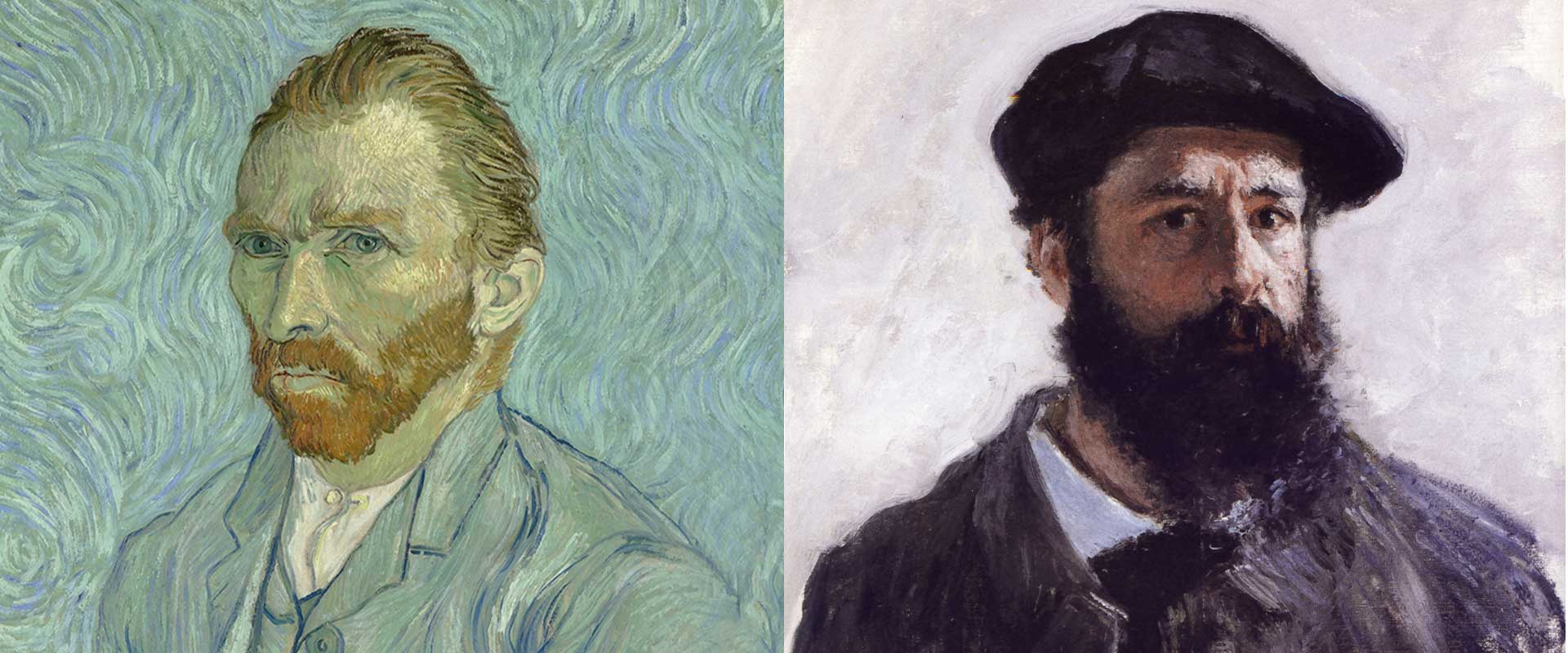When people think of revolutionary painters, Vincent van Gogh and Claude Monet almost always make the list. Though both are associated with movements that shook the foundations of 19th-century art, their approaches, intentions, and emotional depth couldn’t be more different.
In this article, we dive deep into Van Gogh vs Monet — two giants of the art world whose brushstrokes changed everything. What made their styles stand apart? How did their philosophies shape their masterpieces? And why does their art still stir such emotion today?
Claude Monet: The Father of Impressionism
What Defined Monet’s Painting Style?
Claude Monet is often considered the founding figure of Impressionism, a movement characterized by light, color, and fleeting moments. His paintings weren’t about perfect form or deep symbolism—they were about capturing the sensation of a scene.
Key aspects of Monet’s style include:
- Loose brushwork that mimicked how light shifts in nature.
- Plein air painting, meaning he painted outdoors to truly experience his subject.
- Layered colors and light-reflective hues, often in watery scenes like Water Lilies and Impression, Sunrise.
- A focus on natural landscapes—gardens, rivers, haystacks, and the iconic Rouen Cathedral series.
Monet was interested in how we see, not necessarily what we see. He wanted to capture that split second when sunlight hits the water or fog shrouds a bridge.
Emotion vs. Observation
Monet’s goal wasn’t emotional self-expression—it was observational. His work gives viewers a sense of calm, a fleeting moment of visual poetry.
Vincent van Gogh: The Master of Emotional Turmoil
Van Gogh’s Art Style: Bold, Raw, and Expressive
If Monet painted peace, Van Gogh painted passion. His work marked the transition from Post-Impressionism into Expressionism, with a focus on emotion, color, and symbolism.
Key elements of Van Gogh’s style:
- Thick, expressive brushstrokes (impasto) that almost sculpt the paint off the canvas.
- Vivid, unnatural colors to convey mood, not realism.
- Subjects that ranged from sunflowers and starry nights to portraits and wheat fields, all charged with intense feeling.
- A deep sense of spiritual and emotional unrest, often reflecting his personal struggles.
Unlike Monet, who observed nature quietly, Van Gogh used it to scream his internal world. Paintings like The Starry Night and Wheatfield with Crows aren’t just landscapes—they’re states of mind.
Did Van Gogh Have Any Formal Art Training?
Van Gogh studied briefly at art academies and trained under Anton Mauve, but much of his development was self-directed. He absorbed techniques from Impressionists and Japanese prints, yet never fully adhered to academic norms. This lack of formal rigidity contributed to his distinctive, expressive style.
Impressionism vs Post-Impressionism: A Philosophical Divide
Monet: Capturing the External World
- Focused on how light and color interact.
- Tried to depict objective reality as filtered through perception.
- Often painted the same subject at different times of day to explore atmospheric changes.
- Sought beauty in the everyday—a water lily, a railway station, a foggy morning.
Van Gogh: Projecting the Inner World
- Focused on subjective experience and emotional depth.
- Used color and movement to express mental states and spiritual struggle.
- Often painted from memory or imagination, not just observation.
- His works are less about “seeing” and more about feeling.
Techniques That Set Them Apart
| Feature | Claude Monet | Vincent van Gogh |
| Brushwork | Light, broken, fluid | Heavy, swirling, expressive |
| Color Palette | Soft, luminous pastels | Bold, intense, often unnatural |
| Subject Matter | Gardens, rivers, skies, cathedrals | Portraits, starry skies, rural fields |
| Artistic Intent | Visual impression of nature | Emotional expression of inner experience |
| Painting Method | Outdoors (plein air) | Often in studios, sometimes from memory |
| Movement | Impressionism | Post-Impressionism/Proto-Expressionism |
Their Most Famous Works Compared
- Claude Monet – Impression, Sunrise (1872)
Soft, shimmering strokes of a harbor at dawn, evoking light and atmosphere. - Vincent van Gogh – The Starry Night (1889)
A swirling, dreamlike night sky painted from memory, pulsing with energy and emotion. - Claude Monet – Water Lilies Series
Peaceful floating flowers, meditative and immersive, reflecting Monet’s love for nature. - Vincent van Gogh – Sunflowers Series
Explosive bursts of golden color with rich texture, symbolizing life and resilience.
Legacy and Influence
Claude Monet’s Impact
Monet laid the groundwork for modern visual perception in art. His work inspired generations of painters—from the American Impressionists to Abstract Expressionists like Mark Rothko, who admired his sense of mood and space.
You can explore Monet-style art in calm nature collections such as:
- Landscapes Wall Art Prints
- Sunset and Sunrise Prints
Vincent van Gogh’s Influence
Van Gogh’s work reshaped the emotional range of painting. His tortured genius inspired Expressionists, Fauvists, and even modern pop artists. Today, his boldness lives on in energetic and symbolic decor.
You can see Van Gogh’s impact echoed in:
- Vincent van Gogh Wall Art Prints
- Expressionist Wall Art Prints
Which Artist Speaks to You?
Ultimately, the debate of Van Gogh vs Monet isn’t about who is better—it’s about what resonates more with your soul.
- Love peaceful reflections of nature and the calming effect of light? Monet’s your match.
- Prefer raw emotion, intensity, and expressive energy? Van Gogh is your kindred spirit.
Both artists teach us different things: Monet shows us how to observe beauty in the moment, while Van Gogh shows us how to survive with emotion through art.
Conclusion: More Than Just a Comparison
Claude Monet and Vincent van Gogh redefined what it means to paint. One was a master of light and nature. The other, a master of emotion and soul. Their differences set them apart, but their shared genius keeps them both eternal.
To bring a touch of their legacy into your own space, explore curated prints from their styles in:
Let your walls speak with the language of genius—whether it’s Monet’s serenity or Van Gogh’s storm.





